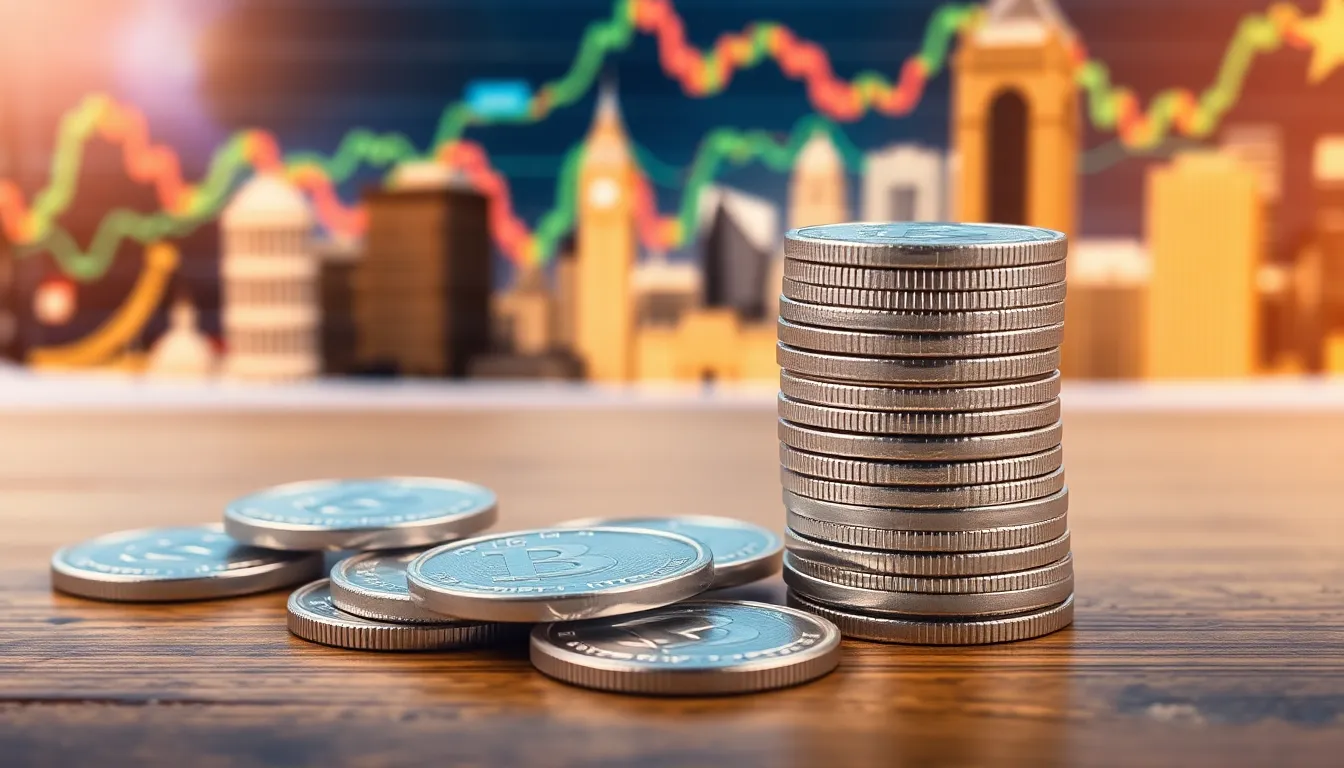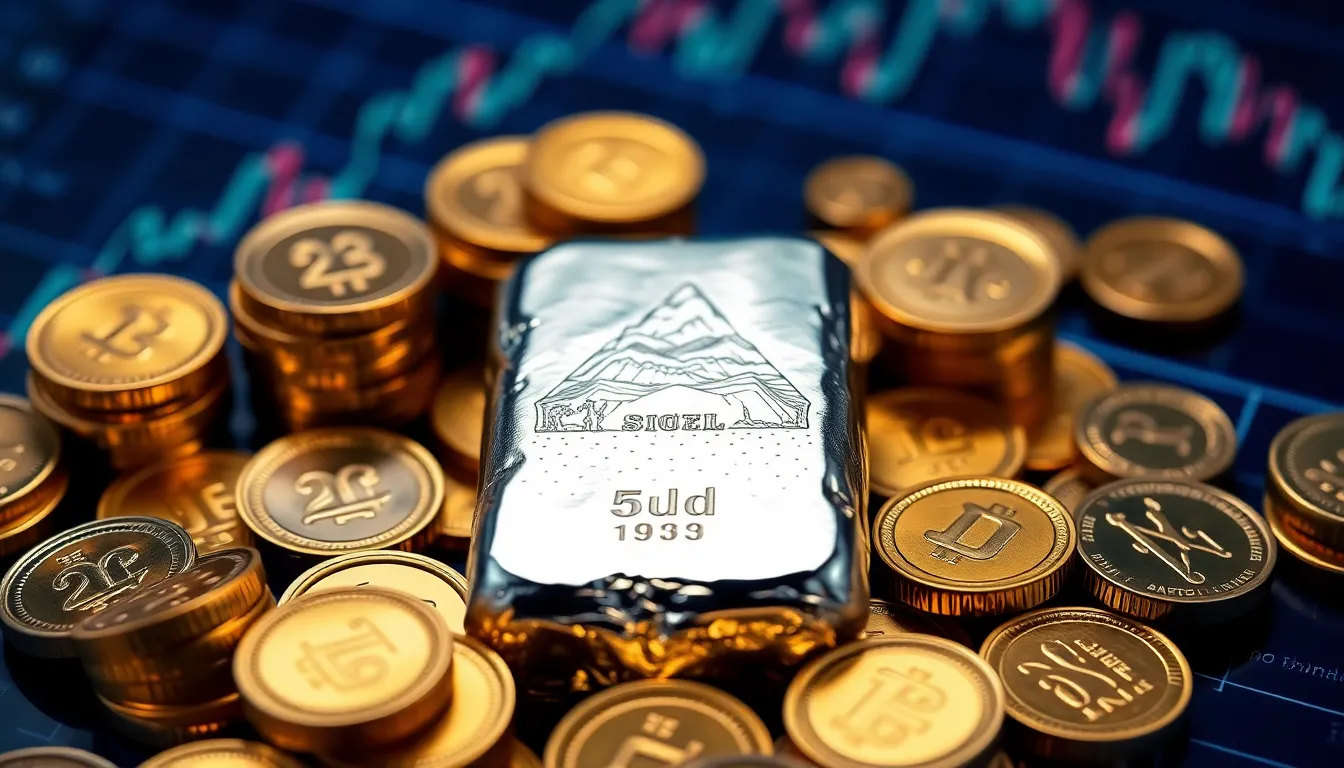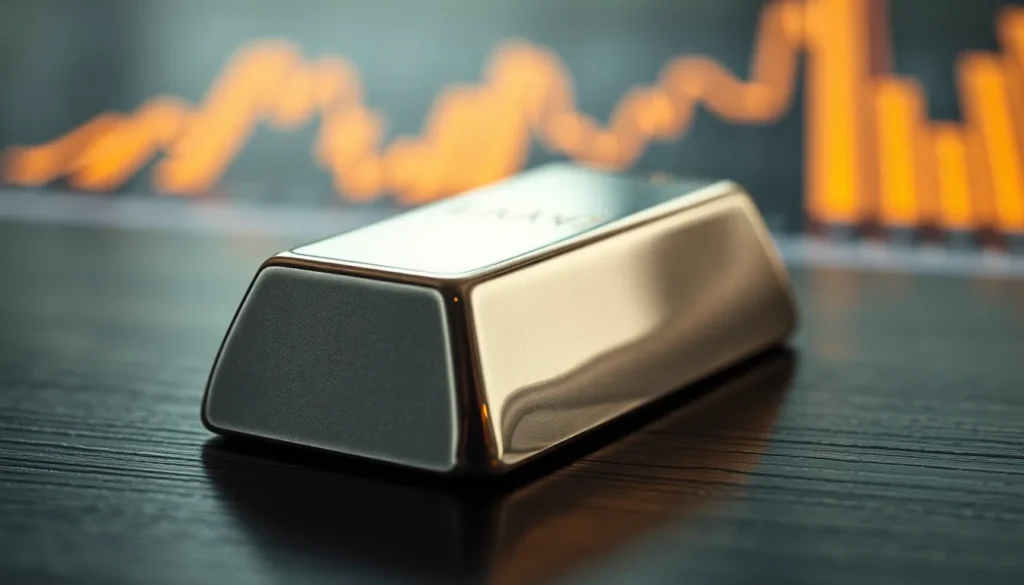Table of Contents
ToggleSilver has long been the underdog of precious metals, often overshadowed by its flashy cousin, gold. But don’t let that fool you; silver’s potential is shining brighter than ever. As global markets shift and economic uncertainties loom, savvy investors are turning their eyes to silver, hoping to strike it rich without having to mine it themselves.
Future Silver Price Predictions Overview
The future of silver prices shows promising trends as interest in this precious metal grows. Analysts predict range-bound trading influenced by economic uncertainties and changes in investor sentiment. Factors like inflation rates and industrial demand significantly shape silver’s value in the marketplace.
Global market conditions present both opportunities and challenges for silver. Rising energy costs affect mining operations, potentially reducing supply while increasing prices. Investment demand, especially from emerging markets, contributes to optimism about silver’s long-term prospects.
Technological advancements also play a role in silver’s future value. The push for renewable energy has led to increased use of silver in solar panels and electric vehicles. Such demand could boost prices, aligning with broader trends toward sustainability.
Market analysts estimate silver could reach significant price points by 2025. Predictions suggest a target range of $30 to $50 per ounce, contingent on economic factors such as interest rates and global demand. Investment portfolios increasingly incorporate silver due to its perceived value as a hedge against market volatility.
Silver ETFs and mining stocks provide investors with avenues to capitalize on potential price increases. Diversification remains a key strategy, as combining investments across various asset classes can mitigate risk. The ongoing exploration of silver in both traditional and new markets reflects its essential role in future economic landscapes.
Factors Influencing Silver Prices


Multiple elements shape silver prices in the market. Understanding these factors provides insight into future price movements.
Economic Indicators
Economic indicators significantly affect silver pricing. Inflation rates directly influence investment demand for silver as a hedge against currency depreciation. Additionally, interest rates determine the opportunity cost of holding silver compared to other assets. Analysts focus on GDP growth as well; robust economic growth often leads to increased industrial demand for silver. Employment rates and consumer confidence can also drive investment patterns, influencing overall market sentiment.
Geopolitical Factors
Geopolitical instability creates uncertainty that often drives investors toward safe-haven assets like silver. Conflicts, trade tensions, and political unrest heighten market volatility, prompting a rise in silver demand. Additionally, government policies and regulations directly impact mining operations and supply chains, affecting availability and prices. Strengthened regulations can lead to increased production costs, which, in turn, influence silver’s market value. Overall, investors keep a close watch on geopolitical developments, as they can prompt swift market reactions.
Supply and Demand Dynamics
Supply and demand dynamics play a crucial role in determining silver prices. Increased industrial usage, particularly in technology and renewable energy projects, raises demand for silver. Simultaneously, mining production levels affect supply; any disruptions can lead to tighter markets and higher prices. For instance, rising energy costs may impede mining activities, potentially limiting future supply. Furthermore, investment demand from emerging markets contributes significantly to overall market sentiment, as these nations look to diversify their portfolios. The intersection of these forces shapes the future of silver pricing in the market.
Expert Predictions
Analysts predict silver’s value will continue to rise, driven by various economic factors and market dynamics. Market trends suggest significant price points between $30 to $50 per ounce by 2025, based on investor sentiment and industrial demand.
Analyst Insights
Investment research firms note that economic uncertainties significantly influence silver prices. Analysts point out that rising inflation rates typically spur investor interest in precious metals. Data reveals that increased industrial applications, such as silver’s role in solar panels, contribute to positive long-term projections. Emerging markets are expected to drive demand as investors seek reliable assets. Market fluctuations may create opportunities, but challenges remain, particularly regarding supply disruptions. Overall, analysts maintain a cautiously optimistic outlook on silver’s future.
Historical Trends
Historical data shows silver prices often correlate with global economic shifts. An analysis of past trends indicates periods of high inflation frequently result in increased silver buying. Research highlights that past geopolitical tensions have driven silver demand as investors turn to safe-haven assets. Price fluctuations illustrate the impact of industrial demand, particularly in technology and renewable energy sectors. Charts reflect significant price increases during times of economic distress, signaling potential future patterns. Understanding these trends aids in predicting silver’s long-term performance.
Potential Market Scenarios
Market analysts anticipate a variety of outcomes for silver prices influenced by distinct factors. Understanding both bullish and bearish perspectives offers valuable insights.
Bullish Perspectives
Expectations for silver prices remain optimistic, driven by increasing demand from renewable energy sectors. Analysts predict that substantial growth in solar panel and electric vehicle production will directly impact silver’s value. Rising inflation rates also foster interest in silver as a hedge against economic instability. Investment from emerging markets contributes to robust demand, bolstering positive sentiment in the market. Furthermore, disruptions in mining operations due to rising energy costs may lead to supply constraints, potentially elevating prices. Such dynamics could see silver reaching significant price points between $30 to $50 per ounce by 2025.
Bearish Perspectives
Concerns about potential price declines persist among market observers. Economic slowdowns could dampen industrial demand for silver, impacting overall prices. Analysts suggest that a strong U.S. dollar during times of economic strength typically undermines demand for precious metals. Additionally, the possibility of increased mining activity poses risks to supply dynamics, which could stabilize or lower prices. Geopolitical tensions, while typically a driver for safe-haven demand, may not have the same impact if the global economy stabilizes. Thus, under certain conditions, silver’s price may struggle to achieve the anticipated growth, remaining within a more conservative range.







